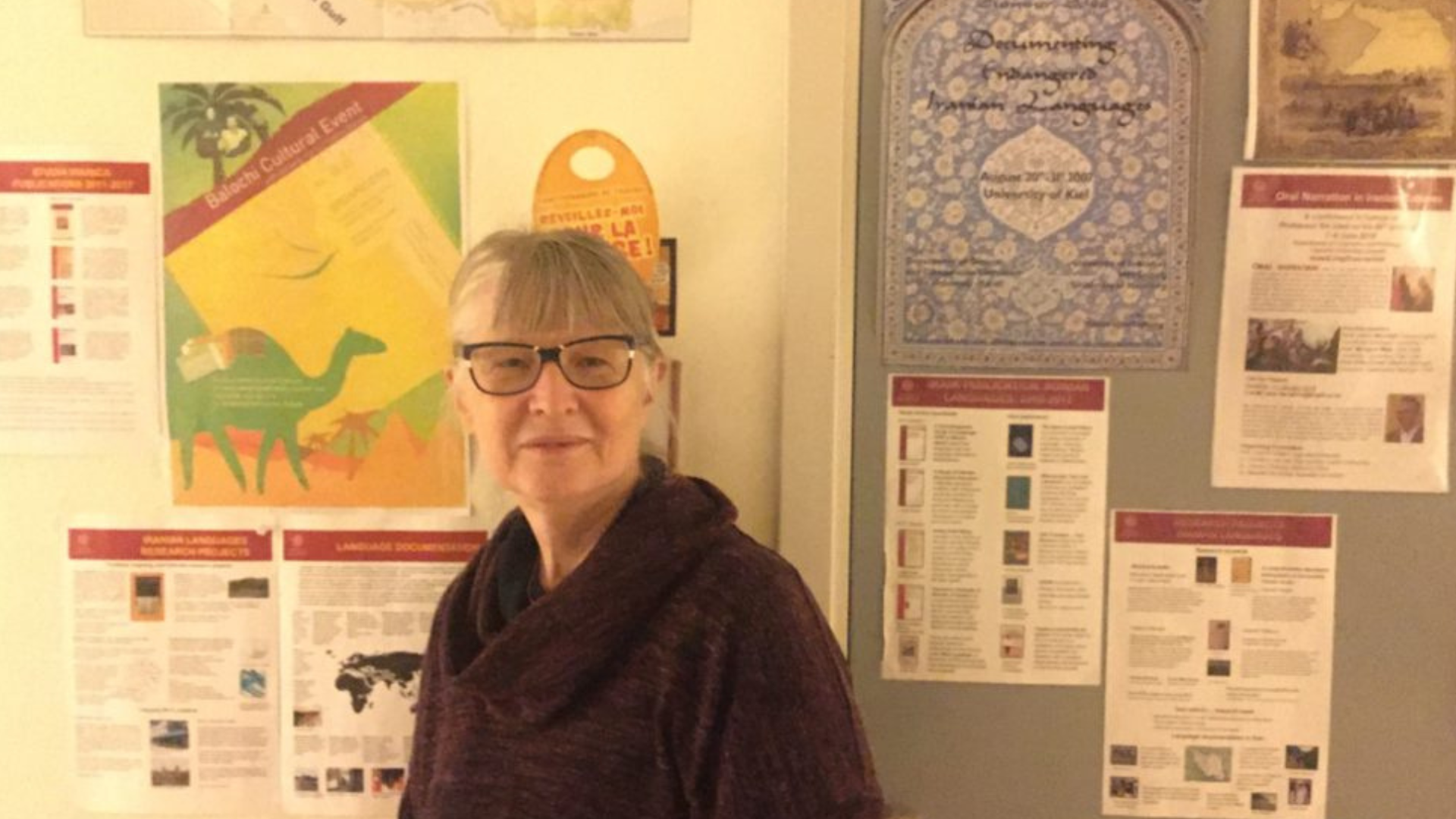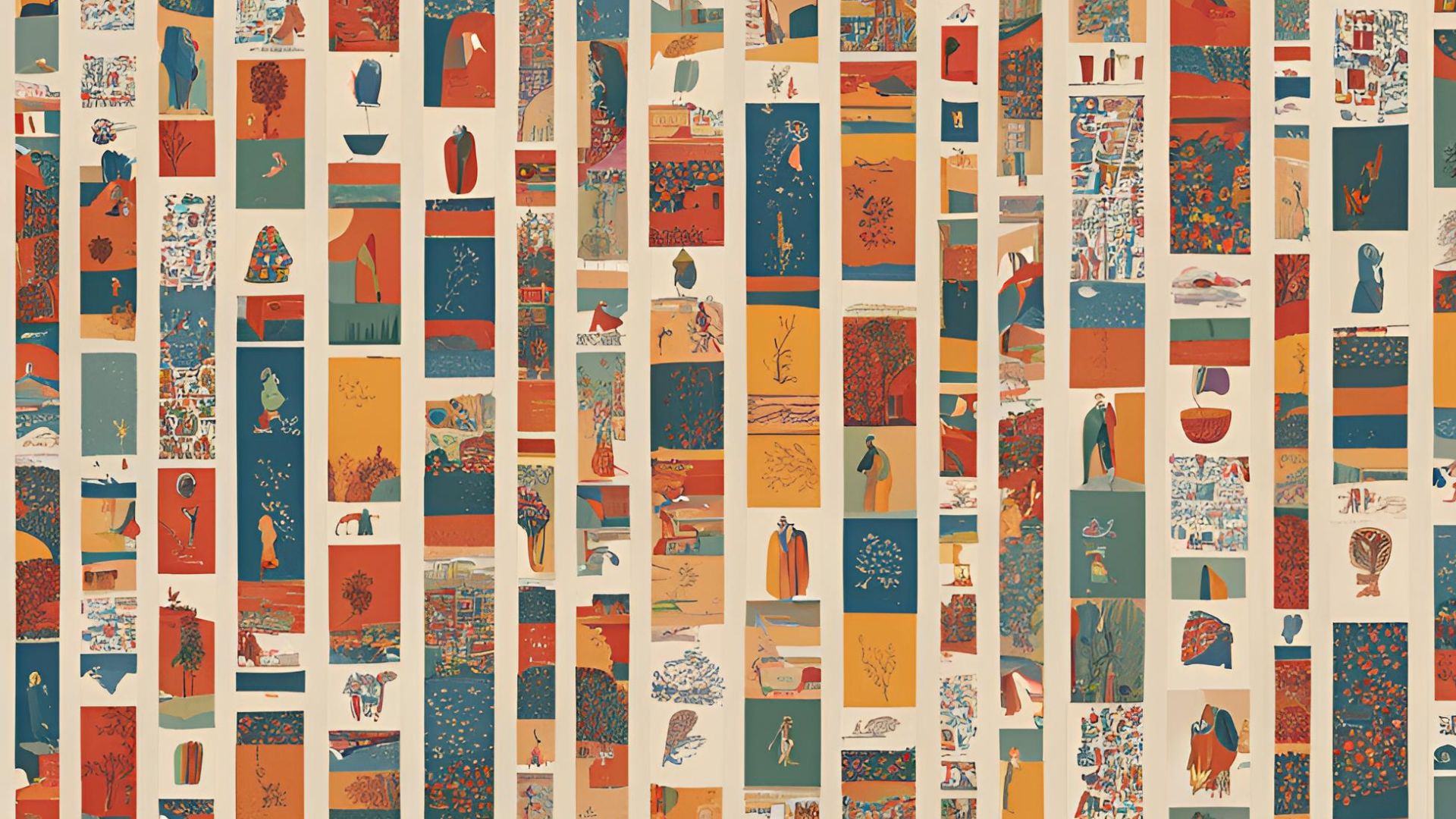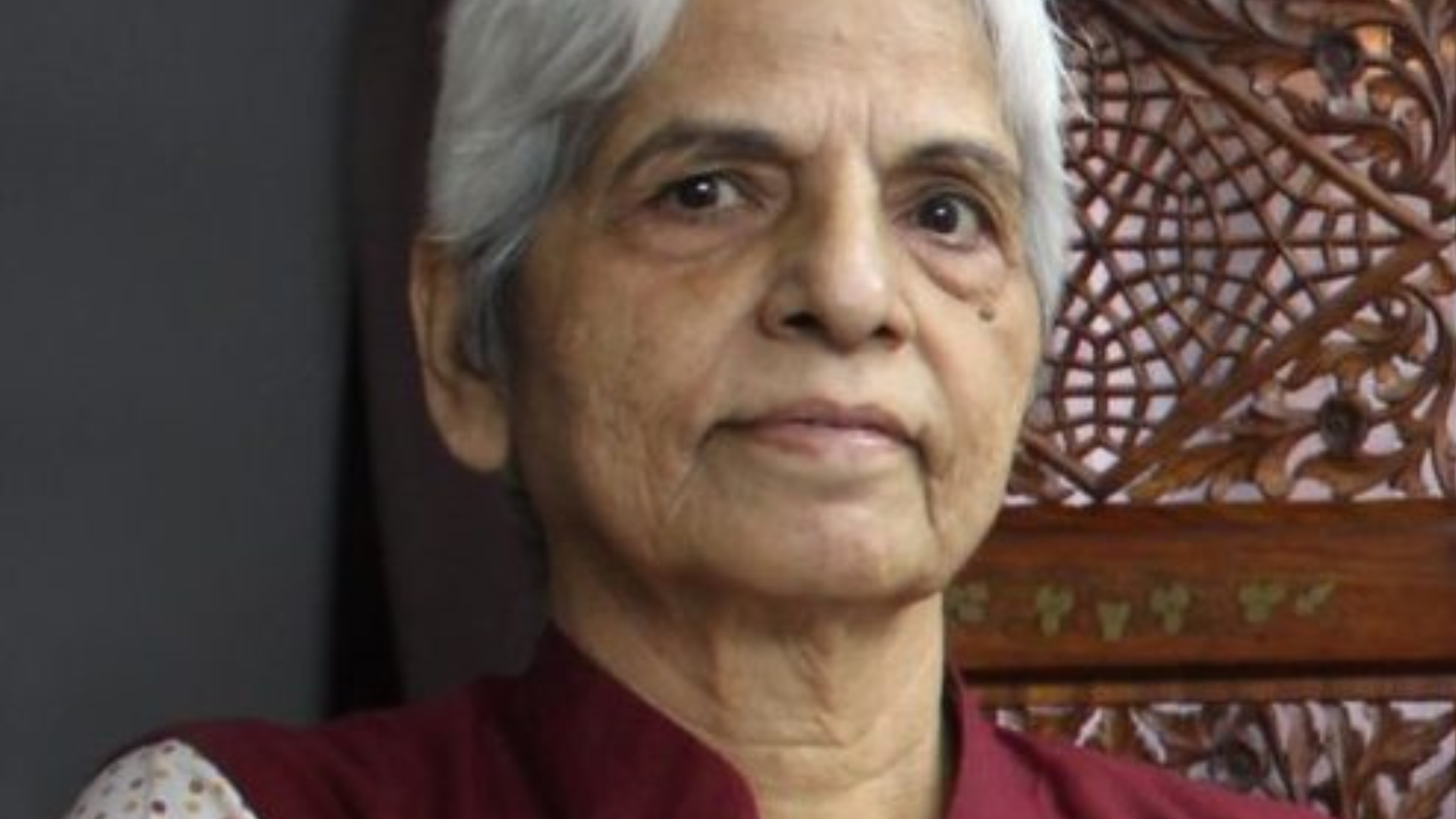
Carina Jahani: Baluchi language is at an important crossroad ( Part 2)
Interview by: Mohammad Reza Nazar
Professor Carina Jahani is one of the prominent Swedish Iranologists who has a great interest in Baluchi language, and for this reason, she has made many trips to Iran and Pakistan and has stayed in Baluchistan-Iran for many years. Professor Jahani’s focus on the Baluchi language is so deep and vast that she can be considered as one of the few Iranian scholars who has devoted her life to the linguistic and traditional similarities between the Iranian Baluchi and other neighboring countries of Iran. She believes that the Baluchi language has not yet achieved its place in today’s modern world and due to the neglect of this language, it has an uncertain future.
Exclusive interview of Ava Diplomatic with Prof. Dr. Carina Jahani – Professor of Iranian languages at Uppsala University
Maybe they learned Farsi only so they can interact with their Iranian friends?
During a period of one year, we had a small Iranian guest, who only knew Farsi. His mother was sick and in the hospital, and this little boy lived with us for a year. It was at this time that my children also started to speak Farsi with this guest, but I think they still did not feel good about their mother being so busy with Baluchi language, and sometimes they joke with me about this. They say that our mother has invented a language and is obsessed with teaching it to everyone.
But to complete your previous question, I must say that yes, the Baluchi language is at a crossroad. If it is disjointed, the Blauchi language will disappear completely within the next generation or two. But on the other hand, if the Bluch people interact with each other, they can achieve a writing standard. If they can sit down and agree and work together for a common goal, there is great hope for this language. Young people themselves do not want to lose their language, but they do not have the means to protect it.
It is very important that these people feel that the government is with them, not against them in strengthening their language. Governments in both Iran and Pakistan should consider measures to preserve and strengthen local languages. However, the policies of suppressing the local language and culture will not help the integration of Kurds, Baluchs, Turkmens and other ethnic groups.
We also hope that this language will become a written language and not be forgotten.
This is exactly the point, for this language to have a written form and have a written standard and written literature. Our world is the world of reading, writing, literacy and education, hence the definition of anything that is limited to non-written areas and remains within the scope of oral language is not considered standard. Baluchi language is not a non-standard language, but unfortunately it is seen as such under these circumstances. Therefore, we need television channels in Baluchi language, we need children’s programs in Baluchi language, we need children’s books in Baluchi language. In general, we need all kinds of media and tools for children to learn and remember Baluchi well.
How do you see the status of Baluchi language in Iranian literature?
The Baluchi language has a very rich oral literature, just like the rich and thousands-year-old Persian literature of the same kind that Ferdowsi’s Shahnameh was written in.
When Ferdowsi started writing the Shahnameh, he actually went to other written stories as well. But it is likely that a major part of his work was based on the legends of oral literature, and we know that the tradition of storytelling in Iran was an important part of Iranian culture until just forty or fifty years ago; Because a large percentage of people were illiterate, and telling stories in night gatherings, tea houses, and the like were part of the tradition. These traditions also existed in the Baluchi language. We have many oral poems in Baluchi language about legendary Baluchi Khans and their love stories or their battles and bravery.
However, Baluchi literature is accessible, it has many poems, and modern literature is expanding in this language, which includes short stories, novels and poetry, which is still the leading art in the field.
When you were in Iran, did you cooperate with Iranian universities, for example, the University of Sistan and Baluchistan province?
I mainly taught linguistics there. Of course, we used to teach various subjects in the master’s degree, including the topics of semantics, phonetics, grammar, discourse analysis and other topics.
How do you evaluate the activity and cooperation of your Iranian students and colleagues?
It was very good, even one of my students came to Uppsala University to study for a doctorate and then returned to Iran. Outside the University of Sistan and Baluchistan, I was also a consultant for several master’s theses.
To what extent have you been able to present an accurate picture of Iran during your years of teaching at Uppsala University?
Here we have had about a thousand students who have studied Persian or at least passed a few units of Persian language courses. As you know, there are many Iranians in Sweden and a lot of attention is paid to the Persian language, both by young Iranians who grew up in Sweden and by Swedes who visit Iranians or have Iranian wives or friends. In addition, there are also the young generation of Iranians who grew up in Sweden.
In addition to all this, every year we have training courses in which students learn the basics of Persian grammar, and we have about 50 students in each course. For this reason, it can even be said that more than a thousand students have completed Farsi language courses here, perhaps even up to two thousand. Of course, before we held summer courses that were about Iranian life and culture, and each course had at least 100 students.
Considering the educational courses that are provided in Uppsala University, do the students of this university have a correct image of Iran?
Firstly, we have to ask what is this correct image? It depends on how we look at this. There can be different images about Iran and I do not think we can say one of these images are correct and the rest are all wrong. If you ask my opinion, each person creates his/her image according to the experiences and the events they go through in different stage of their lives.
For example, I have my own image of Iran and my husband has another image of Iran that is slightly different, on the other hand, visiting Iranian professors at our university have a completely different view of Iran, and students who travel to Iran also have their own perception of Iran. I mean that we do not intend to present an image or impression of Iran to anyone, but we want to teach the Persian language. In fact, we send students to Iran and they will have their own impression of Iran.
How long do your students stay in Iran for the supplementary course?
Our students usually spend up to 6 months in Iran and come back here, they are completely fluent in Persian, and after a year or a year and a half here and spending 6 months in Iran, their Farsi language becomes very good.
As a professor who has made a lot of efforts for the advancement of Iranian languages, how do you evaluate the future and prospects of this language, especially among foreign students?
In Sweden, I see a good future for teaching Persian language and spreading the Persian language. Among Swedish and Iranian-Swedish students or Iranians growing up in Sweden, there is a great interest in learning Persian. We have very interested, diligent and smart students who follow this field and go to Iran and master Persian after 6 months or a year. They also master subjects such as modern and postmodern theories of literature and grammar.
Currently, we have 4 PhD students and every year we are accepting new students for Masters. In the master’s degree, we have ten people, five or six of whom are more active. We get a student for PhD every two years, and as far as I can see, the Swedish government currently supports this field financially. This means that this field is not going to be closed. Persian language courses have also been held in Stockholm. In the city of Malmö in the south of Sweden, there are also people who want to hold Persian language classes for at least one or two semesters.
So, in your opinion, the most important challenge facing the field of Iranology is the lack of government funding and attention ?
Yes, of course it is. If the government restricts the budget, we will have to reduce the number of teachers. But fortunately, considering that about a hundred thousand or more Iranians live in Sweden, the government considers a budget for this field of study.
Has your book or research been published in Farsi?
I don’t have any publications in Persian, of course I know that someone wanted to translate one of my books about the Baluchi language into Farsi, but I don’t know if it has been published or not.
Do you have a plan to write or translate in Persian language in the future?
I personally cannot translate scientific works into Farsi, but if there is someone who wants to do this, I will be happy.
You have traveled to Iran many times, what was your most memorable trip to Iran?
The same year I traveled by land in Baluchistan, I also went from Zahedan to Chabahar, which of course was a very exciting trip. The report of this trip is on my website. On that trip, we arrived at Zahedan airport on February 22, 2005, and several university professors came to welcome us. We had two lectures at the university and after that we left for Zabol. Our trip was very interesting. We went to Hamun Lake and I remember that Hamun Lake was completely dry and there was not even a drop of water in it.
Dr. Ahangar, one of the professors who accompanied us, said that, in his youth, Lake Hamun was full of water and they used to ride boats on it, and he misses that time. From around 1996 to 2005 when we were there, there was a complete drought in this area for seven years. But then it started raining and everyone said that you have blessed us. The little children did not know what rain was because it had not rained for seven years and these children had not seen water fall from the sky.
After that, we went to Iranshahr by car and gave speeches there. After that, we continued our journey to the south, but it had rained so much that the bridge on the Sarbaz city road was destroyed. There was another way there, which was through “Espake”, “Bent” and “Pannouch”, because the bridge was broken, we could not go through Sarbaz road. Instead, we went through Bent and Pannuch.
In Espeke, we asked the municipality there which route is open. In my opinion, they wanted to take us through the “Champ” road, but that road was also closed, and we went through Bent and Pannouch until we arrived near Nikshahr. There, too, the road was blocked and the flood washed away the road. In fact, the water had risen about two meters and it was impossible to pass by car. We waited until another way was found. On the way, there was a passage that was less deep and we crossed the river by car until we reached Nikshahr. We had friends there and stayed there for the night.
We also had a meeting there. And then we went to Chabahar and then we came to Tehran by plane from Bandar Abbas airport.
If you have noticed, in the last few months, the situation of traveling for of Iranologists, foreigners and tourists have become easier. Do you have a plan to travel to Iran again?
I am always thinking of traveling to Iran considering that God watches over my travels.
Source: End of Monolingualism


